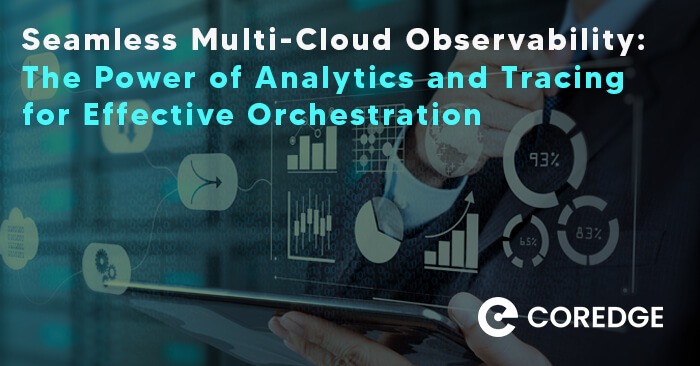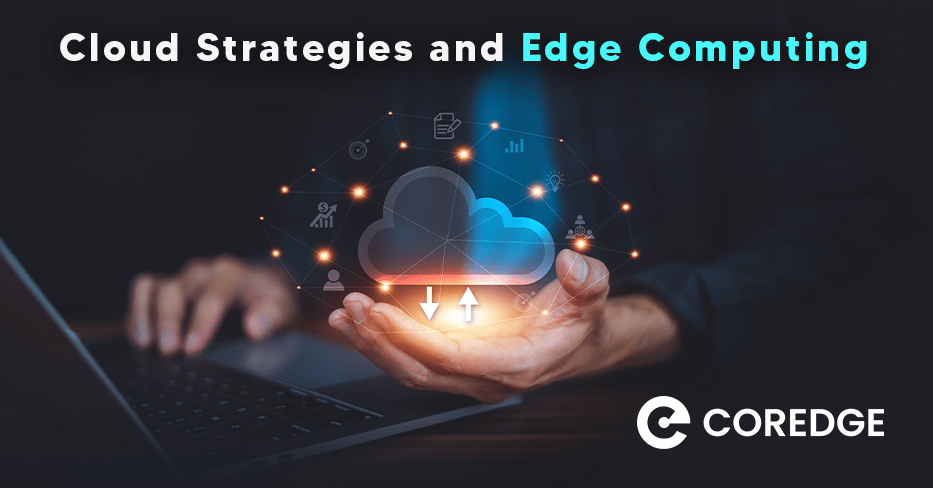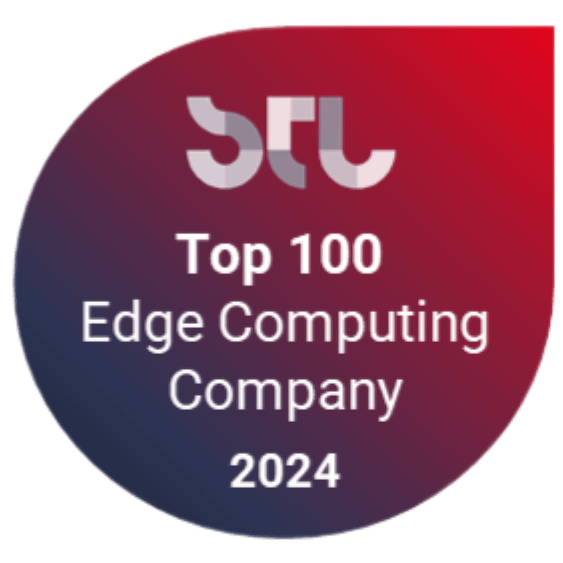Seamless Multi-Cloud Observability: The Power of Analytics and Tracing for Effective Orchestration
Coredge Marketing
April 11, 2023

Observability is the new norm for visibility and monitoring in cloud-native systems. It makes use of a sizable quantity of telemetry data that has been gathered, including metrics, logs, incidents, and distributed traces, to assess the performance and behaviour of the application. It will assist teams in quickly determining the causes of a certain action or occurrence and assessing the incident’s repercussions. This enables engineers to comprehend what is wrong with a system, what is slow or faulty, as well as the cause, origin, and impact of any issues.
Observability is the key to successful multi-cloud deployment
Any system can only be understood to a minimal degree if observability is absent or incorrect. Because of this, software services might not meet service level agreements or objectives, making it difficult to guarantee desired results. observability is a result of well-written platform integrations and software. The primary elements required to offer software observability are tracing, monitoring, logging, visualizing, and alerting. The idea of a visualization system may include some alerting, but alerting is significant enough to be discussed separately.
Tracing
A technique for tracking transactions throughout a system is called tracing. Think of a transaction as any way of using a system’s capability in the context of this article. This comprises network calls to a web service and function calls with pertinent parameters in-built executables. The transaction flow in multi-cloud applications may pass across several networks, services, and functionalities. Including unique identifiers (ID) in the system originating requests to or from is a common method for enabling tracing. Any more functional invocations receive the ID. Logging and monitoring metrics can be linked to the ID together with timestamps to provide end-to-end visibility of the activity.
Tracing will become more crucial as applications split into microservices that may operate across multiple availability zones or cloud providers rather than remaining monolithic in a single data center. With service and network boundaries, the complexity of an end-to-end transaction rises quickly. The only way to comprehend the system as more boundaries are added is through tracing.
Monitoring
Software state temporal measurements come from a variety of external sources, including instrumented (outwardly projected) measurements and OS-provided per-task CPU usage. The measurements can be connected to monitoring systems in a variety of ways, and each system has its own requirements. Metrics are these timestamped and typically tagged measurements. Access to metric data can be provided in two general ways: pull and push.
In a push-style monitoring system, instrumented code is often required to “push” data to the metrics collector. Through service discovery, instrumented code locates the appropriate metrics collecting (monitoring) system, connects to it and pushes the necessary measures.
Logging
Instrumentation is required for both logs and metrics. Sometimes it may not be obvious what should be logged versus taking into account a monitored metric. Logs often keep track of particular actions and associated characteristics. As an instance, you may record a database call along with the SQL (attribute) for debugging reasons. On the other hand, metrics document measurements of a specific value over time.
Similar to monitoring, the log aggregation system will likely become too busy if every action the program takes is recorded. On the other hand, the value of information might not be understood at the time of developing a system and its observability with the advent of big data and machine learning. One thing to think about is finding a balance between current interest and genuine necessity.
The requirement for various log safeguards is also relevant. For instance, audit logs should be safeguarded for future analysis. This advice takes into account integrity and availability security goals when classifying data. Logs must be in a recognized place and must be believed to remain unmodified when audits are conducted.
Visualizing and Alerting
Even the word “observability” implies a visual ability, not only watches and resolutions with invisible programming. For instance, the visualization component should offer clearly visible dashboards, warnings, performance, trends, and other features – all of which contain useful information rather than extraneous data. A visualization system should provide several degrees of detail to avoid information overload and make it possible for people to understand the system’s condition.
Operators shouldn’t have to continuously monitor the visualization system; hence an alerting system is required. Instead, they can be informed immediately that something is beginning to go wrong, and that possible action is needed. On the basis of such a concept, an alerting system may also cause routine issues to be fixed automatically. The demand for automated remediation systems is projected to increase as the proportion of human operators to systems decreases.
Conclusion
The demand for high-quality present-state operating status is generated by distributed software systems, including multi- and hybrid-cloud systems. Using a combination of distributed tracing, monitoring, logging, and visualization tools is necessary to comprehend the operational status, also known as observability. Don’t leave this extremely crucial subject out of your program design and implementation until after it has been deployed. Start now for better sleep tomorrow!
We are always here to assist at Coredge if you need some help getting started. Coredge is uniquely suited to support your company’s multi-cloud strategy thanks to a team of cloud specialists. We have a broad array of solutions, proficiency with a variety of platforms, and specialized industry knowledge. To learn more about developing a successful multi-cloud strategy and its benefits for your particular sector or domain, get in touch with our expert. Our products support IoT use cases and future solutions that customers and their partners manage. Using our products and solutions, combined with partners, our customers can tailor specific IoT solutions to meet their unique needs. We also offer solutions that offer one platform for end-to-end visibility that can support edge device management.
Cloud Orbiter is a multi-cloud, multi-cluster orchestrator platform designed to provide hyper-scaler equivalent capabilities for distributed edge deployments, where clusters across the globe can connect to a central Orbiter controller and become part of the unified management plane. Cloud Orbiter offers seamless infrastructure management and visibility, centralized access control, application onboarding, and cluster life-cycle management.
You can leverage observability for your multi-cloud business success using Cloud Orbiter. Multiple Kubernetes clusters can be deployed, orchestrated, and continuously managed easily using Cloud Orbiter, whether on-premises, at the edge, or in any cloud-based environment.





